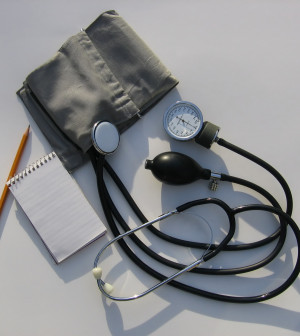- Skip Storing This Everyday Product in the Fridge Door
- Green Tea + B3 Pairing May Boost Brain Health
- Navigating Your Midlife Crisis: Embracing New Possibilities
- City Raccoons Showing Signs of Domestication
- Mapping the Exposome: Science Broadens Focus to Environmental Disease Triggers
- One Week Less on Social Media Linked to Better Mental Health
- Your Brain Changes in Stages as You Age, Study Finds
- Some Suicide Victims Show No Typical Warning Signs, Study Finds
- ByHeart Formula Faces Lawsuits After Babies Sickened With Botulism
- Switch to Vegan Diet Could Cut Your Greenhouse Gas Emissions in Half
Many Americans Trying to Cut Their Salt Intake: CDC


Worried about links between high daily salt intake, high blood pressure and stroke, half of American adults questioned in a recent poll say they’ve tried to cut back on sodium.
The survey of more than 180,000 people from 26 states, Puerto Rico and Washington, D.C., found — perhaps not surprisingly — that people already diagnosed with high blood pressure were more likely to shun the salt shaker.
“Excess sodium intake is a major risk factor for hypertension, and subsequently, heart disease and stroke, the first and fifth leading causes of U.S. deaths, respectively,” noted a team of researchers led by Dr. Jing Fang of the U.S. Centers for Disease Control and Prevention.
Under current U.S. Dietary Guidelines for Americans, the general population is advised to keep daily salt intake under 2,300 milligrams, or about a teaspoon. For people over 51, blacks and those with health conditions such as high blood pressure, diabetes or chronic kidney disease, the recommended daily sodium intake is 1,500 milligrams or less.
The new report suggests that messages on reducing salt intake may be getting through. In response to the question, “Are you currently watching or reducing your sodium or salt intake?”, just over 50 percent of respondents said “Yes.”
But the number of affirmative answers varied widely based on residence, Fang’s team noted. While more than 73 percent of Puerto Ricans said “Yes” to lowering salt intake, and 58 percent did in North Carolina, that number dropped to about 39 percent in Utah and about 41 percent in Minnesota, the study found.
People who knew they had high blood pressure were much more likely to be trying to cut down on salt. For example, 80 percent of Puerto Ricans with hypertension said they were avoiding salt, as were about 72 percent of people with high blood pressure in Kentucky and New Jersey, the CDC researchers found.
In contrast, just 39 percent of people in Kentucky without hypertension said they were trying to cut down.
The good news, said the CDC team, is that efforts to avoid salt appear to be highest in areas where rates of high blood pressure are also high.
But they believe much more could be done by health care professionals to inform patients of their risk. When asked if a doctor or other health care professional had ever urged them to watch their salt intake, only 14.5 percent of survey respondents in Utah said “Yes,” and the rate never rose above 41.4 percent (Puerto Rico) in any site included in the survey.
Besides saving lives, reducing salt intake — and its impact on heart disease and stroke — could ease the burden on the U.S. health care system as well, the CDC team said. Looking at projections for 2010 to 2030, they estimated that “reducing sodium intake by 1,200 milligrams daily is projected to save $18 billion in health care costs yearly.”
The study was published in the July 3 issue of the CDC journal Morbidity and Mortality Weekly Report.
More information
Find out more about salt’s effects on your heart at the American Heart Association.
Source: HealthDay
Copyright © 2025 HealthDay. All rights reserved.










